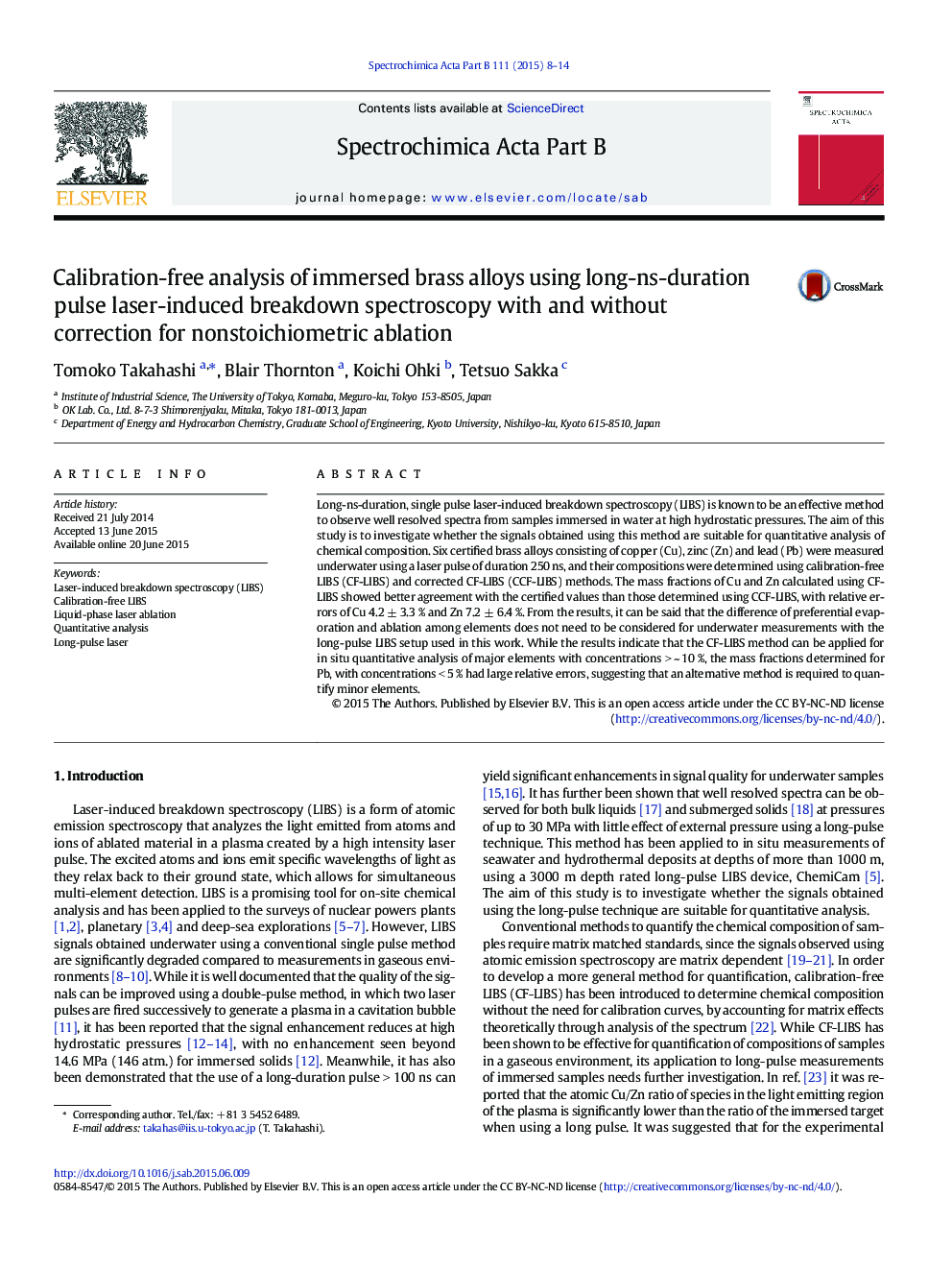| Article ID | Journal | Published Year | Pages | File Type |
|---|---|---|---|---|
| 7674183 | Spectrochimica Acta Part B: Atomic Spectroscopy | 2015 | 7 Pages |
Abstract
Long-ns-duration, single pulse laser-induced breakdown spectroscopy (LIBS) is known to be an effective method to observe well resolved spectra from samples immersed in water at high hydrostatic pressures. The aim of this study is to investigate whether the signals obtained using this method are suitable for quantitative analysis of chemical composition. Six certified brass alloys consisting of copper (Cu), zinc (Zn) and lead (Pb) were measured underwater using a laser pulse of duration 250 ns, and their compositions were determined using calibration-free LIBS (CF-LIBS) and corrected CF-LIBS (CCF-LIBS) methods. The mass fractions of Cu and Zn calculated using CF-LIBS showed better agreement with the certified values than those determined using CCF-LIBS, with relative errors of Cu 4.2 ± 3.3 % and Zn 7.2 ± 6.4 %. From the results, it can be said that the difference of preferential evaporation and ablation among elements does not need to be considered for underwater measurements with the long-pulse LIBS setup used in this work. While the results indicate that the CF-LIBS method can be applied for in situ quantitative analysis of major elements with concentrations > ~ 10 %, the mass fractions determined for Pb, with concentrations < 5 % had large relative errors, suggesting that an alternative method is required to quantify minor elements.
Keywords
Related Topics
Physical Sciences and Engineering
Chemistry
Analytical Chemistry
Authors
Tomoko Takahashi, Blair Thornton, Koichi Ohki, Tetsuo Sakka,
